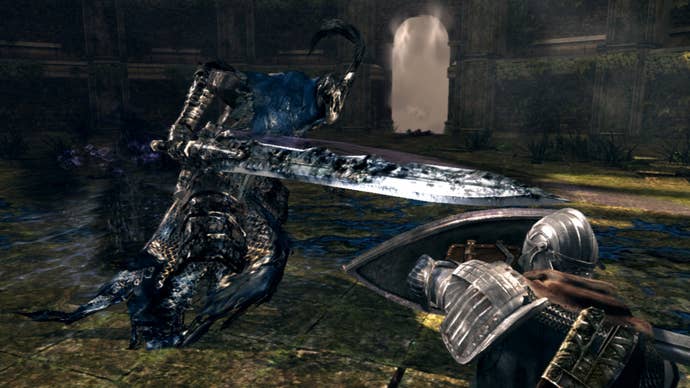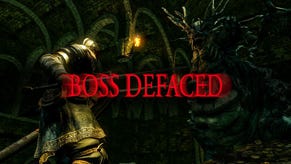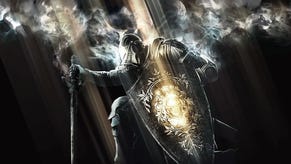Finished Elden Ring but never played Dark Souls? Now's the time
If your business with the Erdtree is finished, it's time to return to the roots.
So, you've finally completed Elden Ring. After dozens of deaths to every one one of dozens of bosses. After untold moments where that infernal golden tree looks like it's just over the brow of the next hill only for you to get waylaid up a mountain – or for a whole new land to emerge between you and your goal – your beautiful, arduous journey is over.
The completion of a From Software game can be a strange time, the initial elation of victory fading into an existential emptiness as boss patterns in other games suddenly seem a little too predictable, and quest markers in mainstream RPGs feel a little on-the-nose (giving you the sobering epiphany that most open-world games really do take you for a fool).
But with Elden Ring already being FromSoft's best-selling game to date, I've deduced that many - if not most - of its players are yet to play its distant predecessor Dark Souls. If you're one of these people, then upon completing Elden Ring there's only one true way to fill that void (no, I'm not talking about Godfall).
Playing Dark Souls after Elden Ring isn't just a matter of 'going back to where it all began,' because that would reduce the former to something of a historical curiosity – an 11-year-old relic that's been improved upon and deprecated by the glimmering new blockbuster.
But the reality is a little more complicated than that, because there's nothing inherently superior about Elden Ring's open world to Dark Souls' denser, more restrictive one. And while you'll initially be baffled by Dark Souls' awkward jump mechanics and lack of horse-based traversal, you'll quickly see how these things serve the game's design (besides, one of the greatest tricks Elden Ring pulled was making us believe that somehow a horse and regular jump button are groundbreaking features when they've been around for generations). If anything, Dark Souls' omission and twist on such 'safe' features was far more ballsy for its time than Elden Ring is today.
Upon awakening in Dark Souls' Undead Asylum, your muscle memory from Elden Ring will kick in as you settle into the familiar mechanics, and translate those Bonfires, Estus, and Souls into the Sites of Graces, Tears, and Runes that you know. That familiarity will circumvent much of the friction that caused so many people to bounce off Dark Souls when first trying to play it back in the day. But beyond that it's not the similarities to Elden Ring that make it such a joy to play. It's the differences.
Dark Souls is an extremely dense game; its claustrophobic, tightly-designed environs offering a remarkable contrast to Elden Ring's dizzying sprawl. Exploring The Lands Between was one of my most exhilarating gaming experiences in recent memory, but it was also exhausting, and after that there's a cold kind of cosiness in the Metroidvania layout of Dark Souls' world. It's comforting in some of its old-school design sensibilities, yet foreboding in a way that FromSoft's latest outing can't quite replicate.
Dark Souls ratchets up tension through both level design and its unique use of the bonfire, which remains a checkpoint and source of respite, but crucially does not act as a fast-travel teleporter. The deeper you venture into a given area, the further and further you're moving away from safety. There's no going back, only forward into an ever-thickening darkness. And then, just as you're drowning in the gloop at the bottom of Blighttown or lost in a labyrinthine keep, you'll stumble upon a bonfire to show you that you're on the right path, rekindling your hopes. These Bonfires really mean something in Dark Souls; they're glimmers of comfort on dangerous expeditions that you can't just zap your way out of.

Dark Souls' expeditionary feel elevates the significance of Firelink Shrine – your solitary sanctuary in Dark Souls. Its sombre sense of homeliness is bolstered by it being a tangible place in the world that you're always heading out from and ultimately weaving your way back to. Elden Ring's equivalent, Roundtable Hold, has a vibe for sure, with its glowing fires and rhythmic clinking of the blacksmith at work, but the fact that you can only access it from a map screen (and the fact that you can do this almost anytime) detaches it from your journey, and makes it that bit less precious.
After all, it's hard to long for a place when you can always pop back in for a cup of tea and an audience with a couple of giant mangled fingers. In Dark Souls, you might sometimes go for hours without the home comforts of Firelink and its world-weary inhabitants, and man is it a relief when you finally make it back. Pushing on through a dungeon in Elden Ring almost always feels like a choice, an act of curiosity and exploration; in Dark Souls, it's a matter of necessity, and that gives it a lot of gravitas.

The contrasting worlds of these games inevitably have a lot of knock-on effects, like boss design. Elden Ring's end-of-area bosses often present significant difficulty spikes, forcing you to give up, go off, level up, then return when you're stronger, while the majority of Dark Souls bosses are designed to be fought as you get to them. There's almost no grind, giving the game an elegant flow and pacing, and with a playtime of around 50 hours or so there's never a sense that it outstays its welcome.
On a sidenote: the Dark Souls PC servers have been down for a good few months now following a major security breach, but there's something to be said for the solitude of offline play after the endless clamour of Elden Ring – the red spirits of other players on horseback comically jumping off cliffs, the deceptive 'hidden path' and tedious 'fort night' messages. I can't speak for Dark Souls on console at the moment, but it seems safe to imagine that the smaller online communities over there are less chaotic and meme-driven than in Elden Ring (which feels a little overpopulated).
Your Ring-Souls transition should be a relatively smooth one, but don't get complacent. It's no power trip, and being pelted by poison in the bowels of Blighttown or shot off a ledge in Anor Londo 20 times by that s**t of an archer is enough to leave the sturdiest souls feeling Hollowed. But all those lessons you picked up in Elden Ring about caution, patience, and timing put you in good stead to tackle Lordran.
The same can be said to an extent of Dark Souls' sequels and Bloodborne, all of which deserve a run-through. But there's an inimitable magic to the original Dark Souls, and its differences to Elden Ring make it perfect for former Tarnished seeking new purpose.











